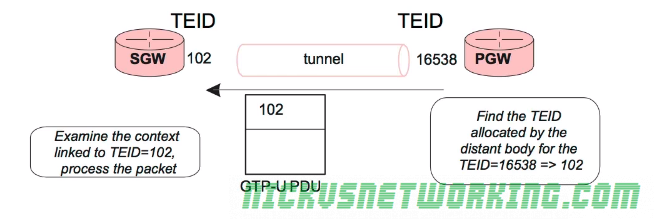These are my lecture notes from IMT’s NET02x (4G Network Essentials) course, I thought I’d post them here as they may be useful to someone. You can find my complete notes here.
As we’ve talked about traffic to and from UEs is encapsulated in GTP-U tunnels, with the idea that by encapsulating data destined for a UE it can be routed to the correct destination (eNB serving UE) transparently and efficiently.
As all traffic destined for a UE will come to the P-GW, the P-GW must be able to quickly determine which eNB and S-GW to send the encapsulated data too.
The encapsulated data is logically grouped into tunnels between each node.
A GTP tunnel exists between the S-GW and the P-GW, another GTP tunnel exists between the S-GW and the eNB.
Each tunnel between the eNB and the S-GW, and each tunnel between S-GW and P-GW, is allocated a unique 32 bit value called a Tunnel Endpoint Identifier (TEID) allocated by the node that corresponds to each end of the tunnel and each TEID is locally unique to that node.

For each packet of user data (GTP-U) sent through a GTP tunnel the TEID allocated by the receiver is put in the GTP header by the sender.
The destinations of the tunnels can be updated, for example if a UE moves to a different eNB, the tunnel between the S-GW and the eNB can be quickly updated to point at the new eNB.

Each end of the tunnel is associated with a TEID, and each time a GTP packet is sent through the tunnel it includes the TEID of the remote end (reciever) in the GTP header.